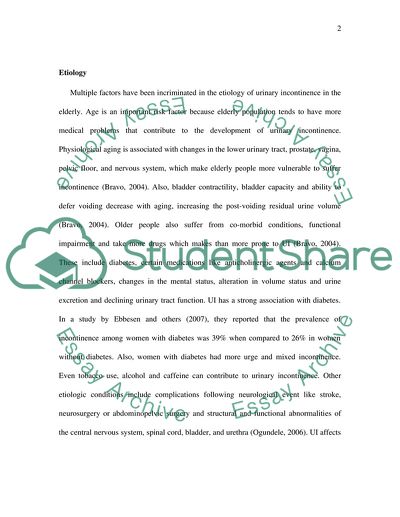Managing Urinary Incontinence in the Elderly Research Paper. Retrieved from https://studentshare.org/health-sciences-medicine/1709704-managing-urinary-incontinnce-versus-promoting-continence-within-the-elderly-population
Managing Urinary Incontinence in the Elderly Research Paper. https://studentshare.org/health-sciences-medicine/1709704-managing-urinary-incontinnce-versus-promoting-continence-within-the-elderly-population.


